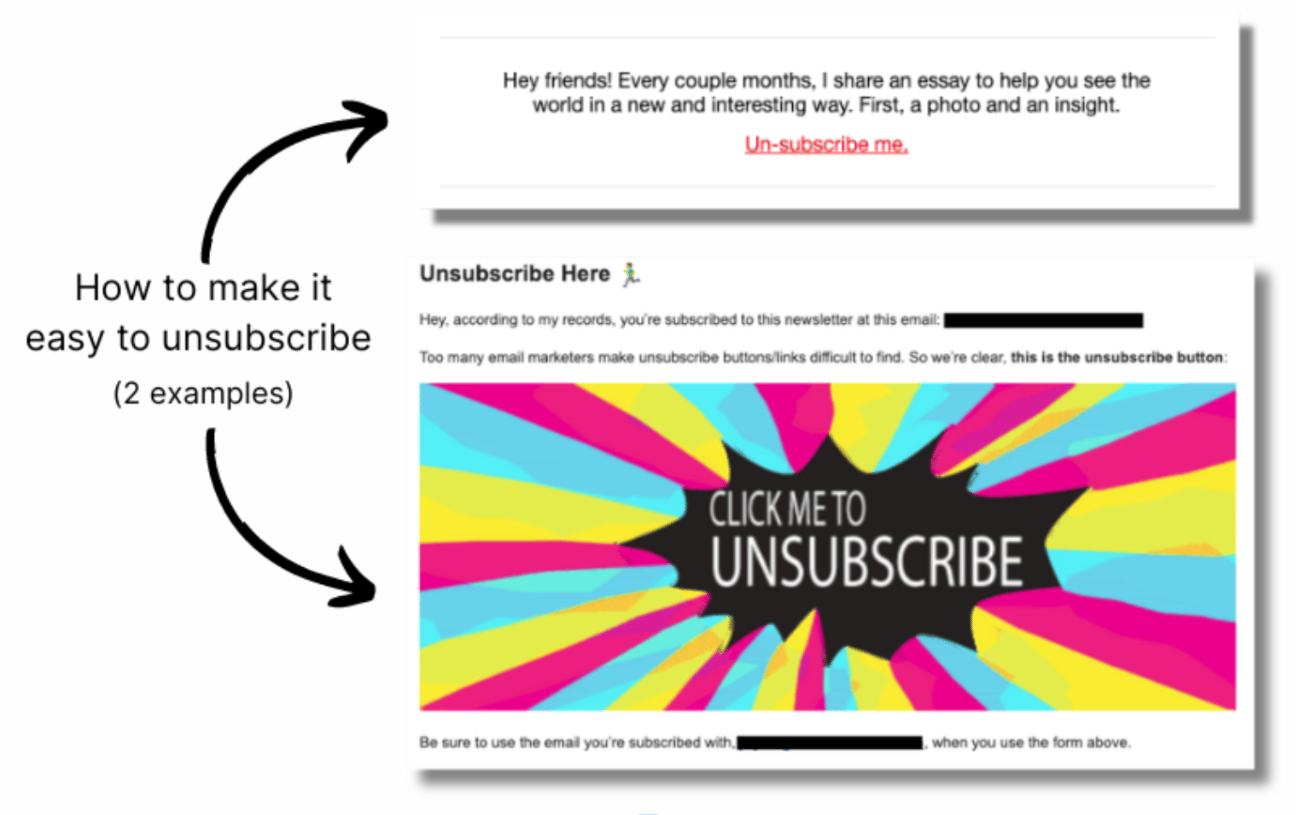Growth Newsletter #292
It sucks to see people unsubscribe from your email list. We can’t help but feel like we’re losing a potential customer.
But what if I told you that unsubscribes aren’t all that bad? And that there’s something even worse?
That’s right. Getting an unsubscribe isn’t nearly as bad as (drumroll, please) a spam complaint.
Today, we're going to talk about how unsubscribes are actually a critical part of cultivating a healthy email list.
Let's get into it.
— Kevin
This week's tactics
Why Unsubscribes Aren’t the End of the World
Insight from Drew Price — VP of Growth Marketing at BryteBridge
Here’s a little analogy to help explain the difference between unsubscribes and spam complaints: If your email is a party, then an unsubscribe is someone leaving. And a spam complaint is someone calling the cops about it. 😱

Because when someone reports your email as spam, email service providers take that to mean your message was low-quality or unsolicited, maybe even malicious.
Not the case for unsubscribes. People usually unsubscribe because they’re no longer interested in hearing from you, even though they once were.
Yes, this could be a sign of poor content on your end—or it could simply mean that your recipient’s mind has changed. And if that’s happened, there’s no point in continuing to contact them. You’re better off focusing your communication efforts on only those who are highly interested in what you have to say.
With that in mind, it’s in your best interest to make it easy for people to unsubscribe. If you don’t, well, they’re much more likely to click the spam button.
The norm is including your unsubscribe link in your email footer. But we’ve also seen a few other unique spins on unsubscribe links.
Julian Shapiro, for example, places an unsubscribe link at the top of his emails, and Christopher Penn uses a giant GIF so readers can’t miss it.

Okay, so unsubscribes aren’t all that bad. But certainly, a high unsubscribe rate can’t be good. So is there an unsubscribe rate you should aim for?
Yes—0.5% or less. Anything higher may be a sign that:
- You’re attracting the wrong leads, aka people who aren’t in your target audience. Or, if you are attracting the right leads…
- Your content isn’t resonating. Lots of possibilities here. Maybe you’re not really speaking to your reader’s concerns or you’re not segmenting your audience.
(These issues are a whole ‘nother conversation. Instead of taking this email on a long tangent, I recommend checking out these two blog posts to learn more: this one about growing your email list and this one about segmentation.)
Making it easy to unsubscribe from your emails doesn’t mean readers will drop off in big waves. It’s really more of a kind courtesy. Going back to our email as a party analogy, you’re just letting guests know where the exit is.
You’ll also be doing yourself a big favor in the long run. An email list with a lot of deadweight—inactive people who delete your emails without a second thought—will inevitably have low opens and clicks. Better to let them unsubscribe so they don’t:
- Make a spam complaint; or
- Bring down your email engagement metrics.
To recap:
- Compared to spam complaints, unsubscribes aren’t all that bad.
- A healthy unsubscribe rate is 0.5% or less.
- You should make it easy for people to unsubscribe from your emails. Besides a link in the footer, consider adding another link at the top of your message (scroll to the top of this email for an example).
So next time you see an unsubscribe notification, take a breath. It's not a rejection, it's just someone clearing the way for the people who actually want to hear from you. And that's the list you want anyway.
– Drew





















